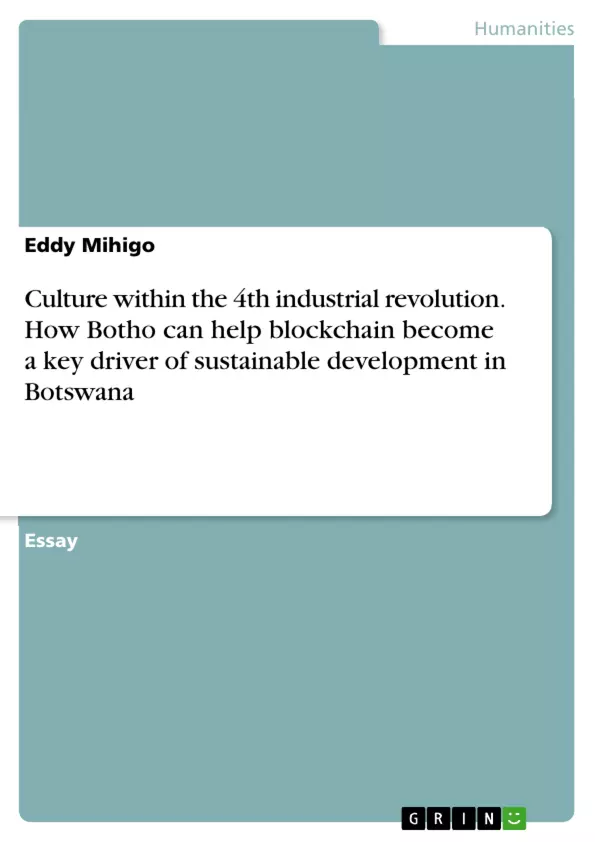Blockchain is the brainchild of a person or a group of people who go or goes by the pseudonym
Satoshi Nakamoto. Originally devised to support digital currencies such as Bitcoin, blockchain has quickly evolved into something more, with the technological community finding other potential uses for the technology in many industries.
Blockchain can be defined as an incorruptible virtual ledger of transactions programmed to record these transactions along with every other item that may be deemed valuable. It is basically time-stamped series of non-modifiable records, and it is managed by a network of computers that are not owned by one entity (this is the block). These computer networks are secured and grouped together using complex cryptographic principles (this is the chain). Blockchain works because of principles of openness, transparency, accountability and most importantly, trust. The genius of blockchain also resides in the fact that apart from the infrastructural cost that supports the technology frame, there is no actual fee for the transaction. One party initiates the process by creating a block, and only after this block is successfully verified by a predetermined number of computers is it added to a chain. The integrity of the whole chain is dependent on this single block, and because there are so many blocks in the chain, the corruption of a chain is pretty much impossible since the whole chain would have to verify a fraudulent process.
Interestingly, a rudimentary version of blockchain has always existed in Botswana through the
culture of BOTHO. BOTHO is based on similar principles, having been defined as an example of a social contract of mutual respect, responsibility and accountability that members of society innately have towards each other and a process of earning respect before giving it, and to gain empowering by empowering others.
Batswana believe that KAGISANO (Harmony) an only be maintained through mutual respect, honesty, transparency and accountability, the very principles used in the application of blockchain technology. This paper aims to deconstruct blockchain and insert BOTHO principles within it to make in a viable option in sustainably developing Botswana's economy and driving this economy into the 4th industrial revolution.
Inhaltsverzeichnis (Table of Contents)
- ABSTRACT
- DEFINTION OF BOTHO AND ITS HISTORICAL CONTEXT
- BLOCKCHAIN: DEFINITION AND BRIEF HISTORY
- BLOCKCHAIN: BITCOIN
Zielsetzung und Themenschwerpunkte (Objectives and Key Themes)
This paper examines the potential of blockchain technology to drive sustainable development in Botswana, specifically exploring how the cultural principle of BOTHO can be integrated within blockchain to enhance its effectiveness.
- The definition and historical context of BOTHO in Botswana
- An overview of blockchain technology and its potential applications
- The application of BOTHO principles within blockchain
- The potential benefits of using blockchain for sustainable development in Botswana
- The challenges and opportunities of integrating BOTHO into blockchain
Zusammenfassung der Kapitel (Chapter Summaries)
- The abstract introduces the concept of blockchain and its potential to enhance various industries. It highlights the key role of BOTHO, a Setswana cultural value based on mutual respect, responsibility, and accountability, in fostering sustainable development in Botswana.
- The second chapter delves into the definition and historical context of BOTHO. It explores the origin and significance of this cultural construct, emphasizing its role in shaping Botswana's social fabric and contributing to its economic success. The chapter highlights the principles of BOTHO, such as consensus-based community structure, mutual respect, and accountability, which have been instrumental in Botswana's development.
- The third chapter defines blockchain, tracing its origin and evolution from its initial application in supporting cryptocurrencies like Bitcoin to its broader potential in various industries. This chapter explains the core principles of blockchain, including openness, transparency, and trust, highlighting its decentralized nature and ability to provide a secure and verifiable record of transactions.
- The fourth chapter focuses on Bitcoin, the most prominent example of a cryptocurrency, and explores how it utilizes blockchain technology to ensure secure and transparent transactions. The chapter discusses the decentralized nature of Bitcoin's network, where nodes (computers) must agree on the validity of transactions before they are recorded on the blockchain. It also touches upon the concept of permissioned (private) and permission-less (public) blockchains, illustrating the adaptability of the technology for various applications.
Schlüsselwörter (Keywords)
The paper explores key concepts including blockchain technology, sustainable development, cultural values, BOTHO, digital currencies, cryptocurrencies, Bitcoin, decentralized networks, and consensus-based community structures. It delves into the integration of cultural values within emerging technologies, specifically focusing on the potential of BOTHO to enhance the effectiveness of blockchain in driving sustainable development in Botswana.
- Quote paper
- Eddy Mihigo (Author), 2019, Culture within the 4th industrial revolution. How Botho can help blockchain become a key driver of sustainable development in Botswana, Munich, GRIN Verlag, https://www.hausarbeiten.de/document/497630


